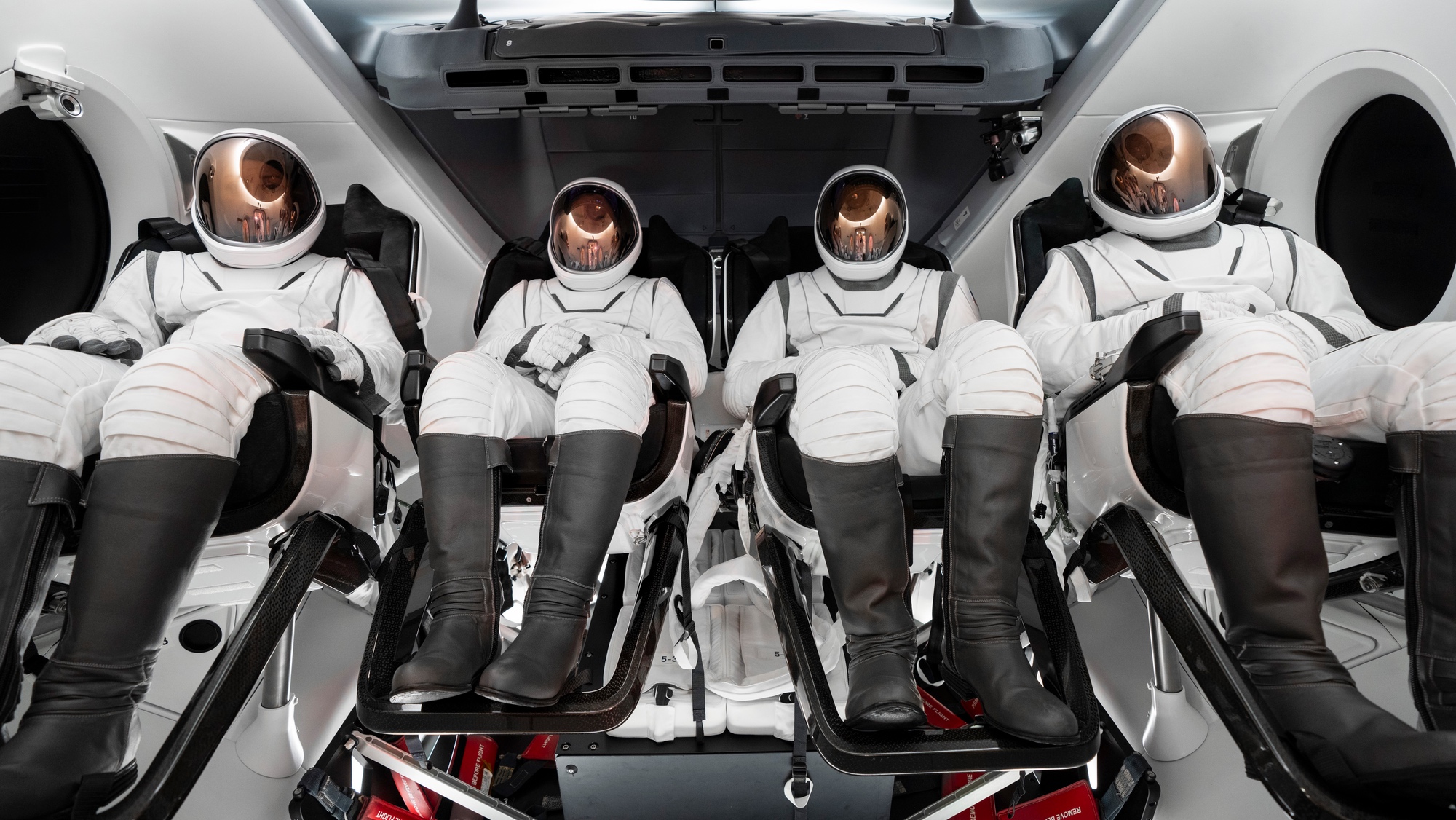Products You May Like
ORLANDO, Fla. — SpaceX has unveiled long-awaited spacesuits intended for spacewalks that will first be used on an upcoming private spaceflight.
The company revealed the design of the extravehicular activity (EVA) suit on its website and social media May 4. The suit is based on the current pressure suits worn by astronauts on Crew Dragon flights but, unlike those suits, is intended for use on spacewalks.
The suit upgrades include new joint designs that remain soft until pressurized while maintaining mobility, improved thermal management, and an upgraded helmet with an exterior coating that acts like a sun visor along with a camera and heads-up display that provides information on the status of the suit during the spacewalk. Umbilicals provide life support for the suits.
The suits will first be worn on the Polaris Dawn mission, a Crew Dragon private spaceflight that is part of the Polaris program of missions backed by billionaire Jared Isaacman. He will fly on that mission with Kidd Poteet, Sarah Gillis and Anna Menon. All four will wear the suits because Crew Dragon, lacking an airlock, will have to be depressurized for the spacewalk.
Gillis said in a discussion hosted by SpaceX on social media May 4 that the spacewalk would last about two hours, including the time depressurizing the cabin at the start and repressurizing it at the end. Two people will exit the capsule, using a device called a “skywalker” at the front hatch with handholds and interfaces to assist them in going through the hatch.
The spacewalkers will go through a “test matrix” to collect data on the performance of the EVA suits. “This is looking at mobility, movement in this microgravity environment, how the suit is performing,” she said. “There’s a whole series of test questions that will be stepped through for the time outside the spacecraft.”
The suits have been extensively tested on the ground, including a test where the entire Crew Dragon capsule was placed in a vacuum chamber and the cabin depressurized with four “spacesuit simulators” inside. “That all worked as expected,” said Stu Keech, vice president of Dragon at SpaceX. “That’s equivalent to the uncrewed Demo-1 flight” of Crew Dragon in 2019.
The spacewalk also required modifications to Dragon itself, such as a repressuization system to restore cabin pressure after the spacewalk and changing some materials based on their outgassing properties. “The interior is going to look a little different when you see pictures of us sitting in the spacecraft,” Gillis said.
The suits will also be used as the pressure suits worn during launch and reentry on typical Crew Dragon missions. SpaceX plans to eventually combine the two suits into a single one, with some changes already incorporated into pressure suits starting with the Crew-6 mission based on what the company learned developing the EVA suits.
“The goal of this suit is to be our first design of the EVA suit, and then, just like all over SpaceX products, we’re going to continue through block upgrades as we go forward and learn,” Keech said.
Polaris Dawn plans
The spacewalk is a key part of the upcoming Polaris Dawn mission, and development of the spacesuits had been a pacing factor for that flight, once planned for late 2022 but delayed several times since then.
Polaris Dawn is now scheduled for early summer, and SpaceX expressed confidence that the schedule would hold. “Polaris Dawn is the next major operation for the Dragon program,” Keech said. “Right now the whole team is driving towards a launch date in early summer of this year.”
The Falcon 9 launching the Polaris Dawn mission will place the Crew Dragon spacecraft into an elliptical orbit of 190 by 1,200 kilometers, Menon said. The spacecraft will then raise its apogee to 1,400 kilometers, the highest altitude for a crewed mission since the Apollo 17 crewed mission in 1972.
Dragon will remain at that apogee for about seven orbits, collecting data on the increased radiation environment, before lowering to 700 kilometers. That is the altitude at which the mission will conduct the EVA. The mission will remain in orbit for five days, Isaacman said, conducting experiments and testing the ability of the spacecraft to communicate through SpaceX’s Starlink constellation.
The flight profile, with the higher altitude and the spacewalk, brings with it new risks. Keech said SpaceX had evaluated both the radiation and micrometeroid/orbital debris impact risk for this flight profile. “The Polaris Dawn mission, for both of those, will be within the risk that we accept for a six-month ISS mission,” he said. “We want to make sure that we’re not unnecessarily taking risks, but you do have to expand the envelope and do it methodically.”
“We certainly are briefed constantly on where the differences are between our mission and a normal profile,” Isaacman said, “and feel really comfortable they’ve been addressed.”
